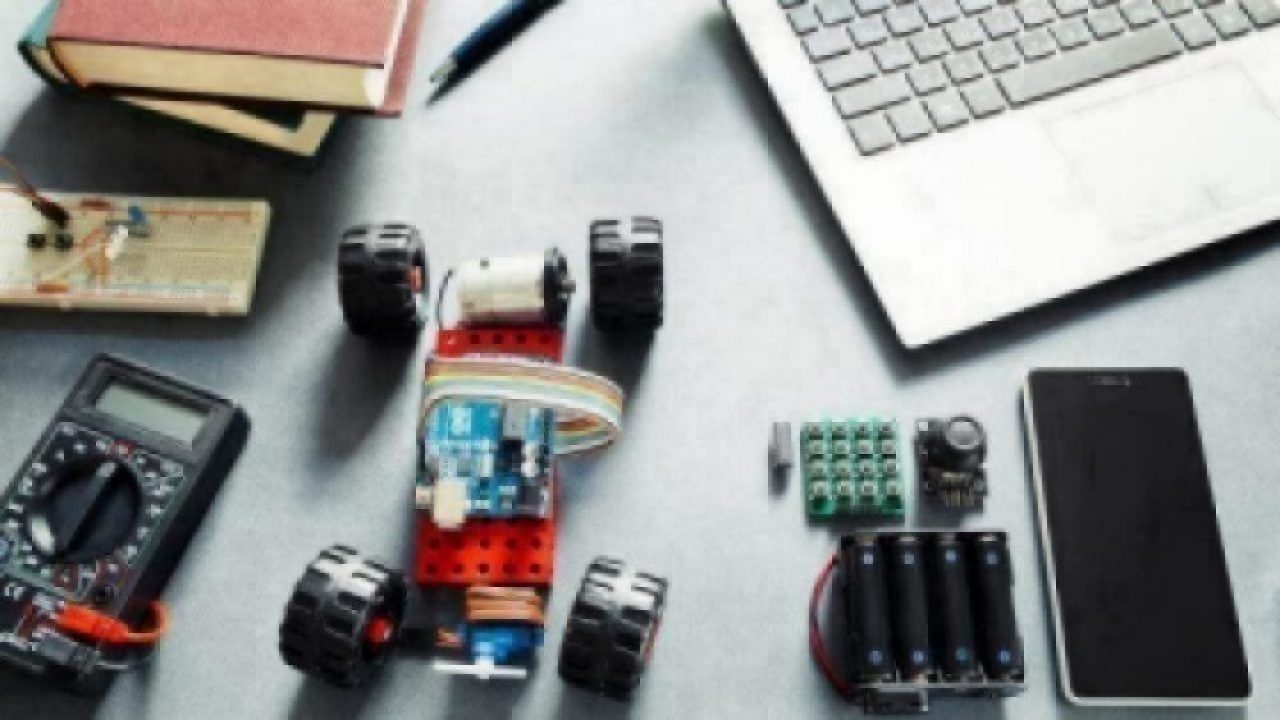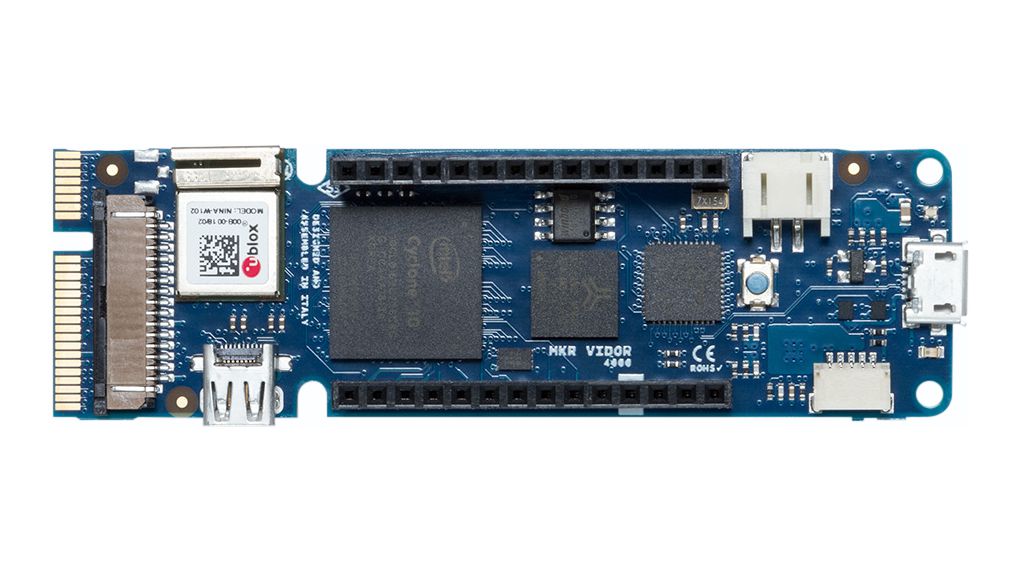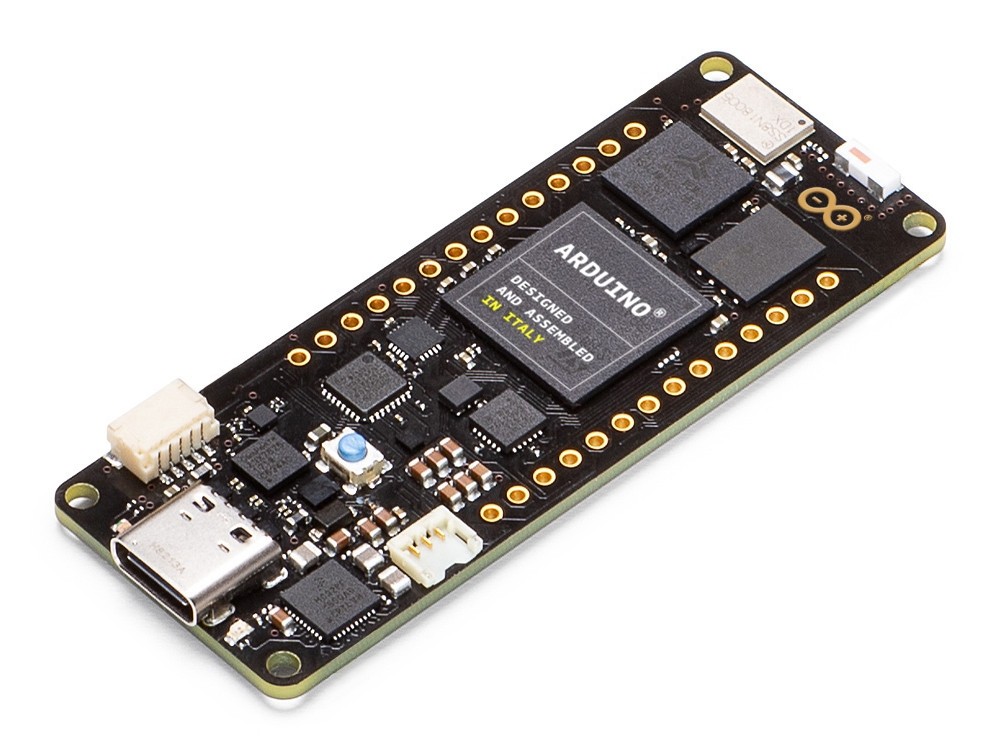The Role of Open-Source Hardware in the Modern Era
Article By : M. Di Paolo Emilio

Arduino Uno arrived in 2005. Many things have changed since then, but the best way to know Arduino is to interview its CEO, Fabio Violante.
Arduino is an open-source electronics platform based on a simplified hardware and software management system. Probably the best known Italian brand in the digital world, Arduino has become an icon for its pioneering open-source boards.
With Arduino, it is possible, in an extremely fast way, to develop devices that integrate not only classic electronic components but also sensors, servomechanisms, and communication devices. Arduino, therefore, breaks down the barriers to entry that the world of electronics experienced with information technology and opens up a universe of possibilities to the world of modern makers who like to experiment and prototype electronic devices at economically advantageous prices.
Arduino Uno arrived in 2005. The technology par excellence in Italy has become one of the pillars of the maker movement. Many things have changed in recent years, and the best way to know Arduino better is to interview its CEO, Fabio Violante.

EE Times Europe: I grew up with Arduino. I saw it come to life, grow up, grow up a lot. I saw the emergence of startups with Arduino as the basic element of their prototypes. And now it has a huge community, potentially the largest. What’s Arduino trying to get to?
Fabio Violante: It’s always great to hear that people grew up with Arduino, and we’re pleased to see our products continue to be widely used as a prototyping platform for startups going on to be successful companies in their own right. Arduino now has over 30 million active community members, many of whom are looking for the simplicity that made Arduino so popular in the hardware market, to be carried over into IoT applications – basically, simplify the process for designing connected devices in the IoT. Therefore, we are focusing a lot of effort on the Arduino IoT Cloud to facilitate low code application development i.e., in true Arduino style, make it quick and easy for users to seamlessly develop their applications. For example, we recently announced improved support for LoRaWan on our cloud – this is a quantum leap compared to existing solutions where most of the work to transform sensors data into packets is performed manually by developers.
The latest Arduino Portenta aims to give a bigger push in the industrial market. The so-called “Industrial Makers” are being born. What advantages this board is going to offer the industrial market, and what are the main applications? What could be the design challenges?
Very often “industrial makers” require industrial-grade components: quality, product longevity and industrial temperature range is paramount. This is the reason why we designed the Portenta family to meet this criteria. With the help of selected partners like STMicroelectronics for the Portenta H7, we were able to create not only a reliable product but also the most powerful dual-core microcontroller based module with low power consumption on the market. Furthermore, by standardizing on two high-density connectors (located at the bottom of the module), we aim to open up a big opportunity for partners, design firms and the ecosystem to develop a number of vertical applications using our modules as the “brain” in their devices. More computing power on the edge means more sophisticated applications, including signal processing, machine learning for predictive maintenance, and simple vision tasks etc.
We have many MCU-based boards. FPGA-based Arduino could be a new way with MKR Vidor 4000. Is there a particular reason to choose a microcontroller instead of a FPGA as the core of the board?
Historically, Arduino has been built around microcontrollers – we live and breathe them, but as you pointed out FPGAs are very promising technology that probably never became mainstream in our community due to complexity in both development and assembly.
Our aim with the Vidor was twofold: build a multi-core accessible board on which the FPGA can be seen as an “infinitely flexible peripheral” and, more importantly, build a tool to simplify the usage of FPGAs by less sophisticated engineers and makers.
The development of the tool, unfortunately, took longer than planned, with multiple prototyping iterations required to get the usability right. We are confident we’ve nearly solved the usability challenge and will release the tool later this year, initially as a beta to be followed by general availability when our users confirm if we’ve ‘cracked it’.


How did you come up with the particular Arduino shield? Its shape could be replaced by the MKR.
The answer is very simple: we misplaced the connectors by accident, and this made it impossible for people to easily use the board on breadboards, but we had a huge batch of boards already manufactured. More importantly, though, I would like to highlight that the objective for the Arduino UNO board was to use the least amount of parts needed to make something useful, in contrast with development boards of that time that tended to be large, expensive, full of parts and very complicated. In order to make the board expandable, we came up with this idea of stackable modules which would be easy to plug even for a beginner. The combination of Arduino + Shield enabled a lot of people to build applications quite quickly. This created an ecosystem of hundreds of manufacturers. The name “Shield” was jokingly invented by David Cuartielles starting from the fact that Arduino was the first king of Italy in the year 1000, so these modules would be the King’s shields.
When the amount of Uno pins became a limiting factor we introduced an additional connector on the Due/Mega form factor and that is still a very widespread solution. As size constraints became an important consideration, many of our users were asking for a smaller form factor. We came out with the MKR family which is more compact and introduces the concept of built-in communication modules.
With the Portenta form factor, we’re evolving on from the MKR by adding two high-density connectors. These will ease usage in industrial applications where the board needs to be used as a module, by hosting as many as 160 pins to facilitate a multitude of interfaces for the user.
What are the programs for Arduino IDE?
While we are committed to maintaining and improving the traditional Java Arduino IDE, we recently started the development of a more advanced environment called the Arduino Pro IDE. Many users over the course of years have manifested their desire to have advanced editing features like auto-completion of code and debugging capabilities. The new Pro IDE is now available and can be downloaded and alpha tested from the arduino.cc website.
Listening to the users’ feedback, we created a CLI tool which implements all the “backend” functions of the Arduino IDE, so that people can use whatever editor they like while effortlessly generating the same executables as the official IDE.
There is also an online version of the IDE (create.arduino.cc) available for people who like to develop in the cloud. It has already proved to be very popular and successful with more than 1.3 million users to date.
Do you have any special collaborations planned? Other IoT boards? Artificial intelligence? Is anyone thinking of acquiring Arduino?
Sure, we are strengthening our technology partnerships with vendors of advanced technologies with the aim of democratizing access to sophisticated technology. We are going to make some important announcements in the forthcoming quarters.
Of course, Arduino is a popular platform, and we continuously receive interest from different companies and financial investors.
We know the difference with Raspberry Pi. Are you planning to create a similar board but with an Arduino OS, for example? What features of Raspberry Pi do you like and don’t like?
Raspberry Pi had a tremendous impact on the world by making a powerful microprocessor available at a really low price. In this area, we really appreciate what they have done. We have a good relationship with them and have even embedded a Raspberry Pi into the Arduino Pro LoRa Gateway. As Arduino, we tend to stay close to the microcontroller world for the execution of real-time tasks and we are evaluating multi-core technologies combining MPUs and MCUs that will enable the best of both worlds, with emphasis on low power and industrial readiness. But we are not planning by any means to enter the low-cost Raspberry Pi space, where we recognize they have done a great job and they are continuing to democratize the access to powerful general-purpose Linux-based computers.
Could you imagine open-source hardware in 20 years?
I think open source is a great way to foster innovation, freedom and creativity. As far as the business models are concerned, for sure there will be some adjustments in the future, because there is a bit of imbalance between people that, like us, spend a lot of time and energy designing the core technologies, writing tons of lines of code, firmware and libraries; and people that just take our designs and code, clone it as it is and then release a cheaper product on the market which, in many cases, even violates our trademarks (e.g., you cannot call a clone product Arduino Uno R3 even though you can build a legal clone identical to our UNO R3), our USB identifiers etc. In most cases, while we have a lot of collaboration on the software side we see very limited contribution back on the open-source hardware designs. At Arduino, we try to contribute a lot to existing projects rather than predating other open-source projects. In the near future, we will be partnering with a number of other organizations to support the development of the most complex projects and will provide more visibility to the ones we deem important for the community.
As a final remark, I do believe that very likely combinations of SaaS and hardware revenue models will help sustain the open-source hardware companies.
What do you recommend to those who want to start an Arduino driven startup?
Go for it! Of course, we encourage people when building their startups to keep leveraging Arduino as a prototyping tool, as a production tool and eventually as an enabling IoT cloud.
I would suggest that startuppers in this field carefully evaluate the challenges related to starting a manufacturing business from scratch. It can be very exciting, but also quite daunting. As a possible alternative, we see a lot of startups embracing Arduino especially in areas where they have some value-added innovation in software, algorithms and business model but they don’t want to become experts in hardware. They tend to build products based on combinations of tried and tested Arduino modules plus a small percentage of custom hardware. This gives a much faster time to market which is what a startup needs to achieve momentum.
In conclusion, I would like to ask your personal opinion on the Coronavirus outbreak which is upsetting the Chinese market. What is the impact on the electronics market as China is a key market for global manufacturing?
At this point, we haven’t seen any tangible impact from the Coronavirus on our supply chain. Like the majority of companies in the electronics world, we depend on components that, in many cases, are supplied by Chinese factories, hence we may expect some shortages in the future. We have received some advisory notes from distributors in the supply chain about potential minor slowdowns in supply, but we believe they will not substantially affect our ability to deliver… We continue monitoring the situation and we are putting in place some countermeasures to mitigate the effects.
Subscribe to Newsletter
Test Qr code text s ss


